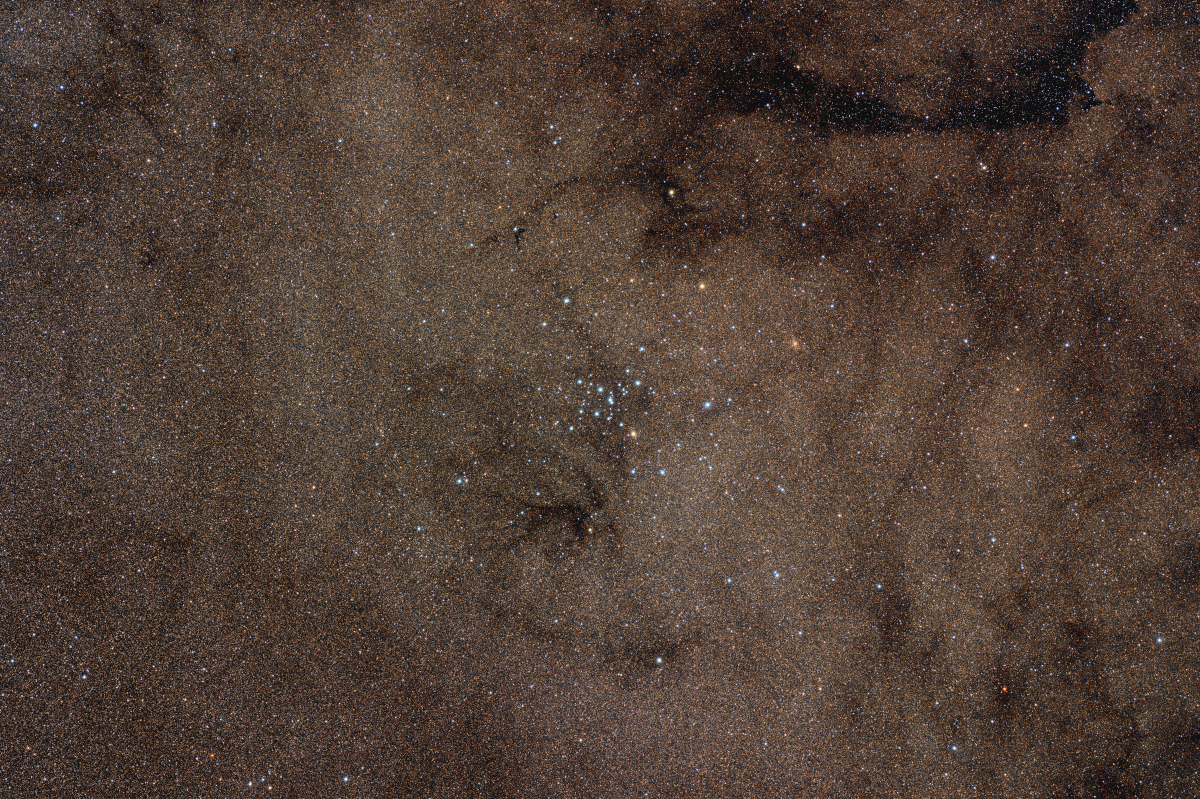

|
Type II2r |
|
0.5 degree |
|
(c) 2023 All astro photo images are copyrighted. They may not be used or reproduced without explicit written permission from the authors.
About this Image / Über dieses Bild
| Camera: | Moravian C3-PRO-61000 Mono CMOS |
| Image Type, Orientation: | RGB Composite, North is at 12:00 |
| Exposure time: | R,G,B: 20x120 sec. unguided |
| Exposure date: | June 6th,7th, 2023 |
| Location: | Capella Observatory South at Kiripotib Astro Farm, Namibia, remote-controlled from Heroldsbach/Germany |
| Filter: | Astronomik Deep-Sky RGB Filter set on Moravian EFW-3L-9-II External Filter Wheel |
| Instrument: | "Callisto", a Takahashi FSQ 106N, 530mm focal length, 106mm aperture, f/5 on modified Losmandy G11 (high res encoders with OnStepX) |
| Photographer: | Rainer Raupach, Josef Pöpsel, Frank Sackenheim |
| Remarks: |
The open star cluster Messier 7 in the constellation of
Scorpius is the southernmost object in the Messier catalog and the third
brightest after M45 and M44. It contains approximately 80 stars brighter
than 10 magnitudes and has an apparent size of 80 arcminutes. While the
cluster stars are located in the neighborhood of the Sun at a distance of
about 800 light-years, the stars in the background Scutum-Centaurus Arm are
heavily reddened due to extinction, giving them their golden color. The
image has captured nearly one million stars from the inner arm of the Milky
Way. Some areas are obscured by molecular clouds appearing as dark nebulae. Very discreetly, also small planetary nebulae can be found that stand out with their bluish color as against the golden banks of stars (at full resolution!), such as PN K 6-32 near the center (RA 268.4163 DEC -34.7277) and PN Hf 2-1 to the west (RA 267.8006 DEC -34.9234). BlurrXTerminator was used for the image (option "correct only") |
|
|
|
| Bemerkungen: |
Der offene Sternhaufen Messier 7
im Sternbild Skorpion ist das südlichste Objekt im Messier-Katalog und der
dritthellste nach M45 und M44. Er umfasst etwa 80 Sterne, die heller als 10
mag sind, bei einer scheinbaren Ausdehnung von 80'. Während sich die Sterne
des Haufens in ca. 800 Lichtjahre Entfernung in der Nachbarschaft der Sonne
befinden, sind die Sterne im dahinterliegenden Scutum-Centaurus-Arm durch
Extinktion stark gerötet und erhalten dadurch ihre goldene Farbe. Auf dem
Bildausschnitt sind nahezu eine Million Sterne des inneren Arms der
Milchstraße sichtbar. Einige Bereiche sind durch Molekülwolken, die als
Dunkelnebel erscheinen, verdeckt.
Das Bild wurde mit dem BlurrXTerminator bearbeitet, wobei lediglich "correct only" verwendet wurde. |
Back to the Open Clusters Overview / Zurück zur Offene-Sternhaufen-Übersichtsseite